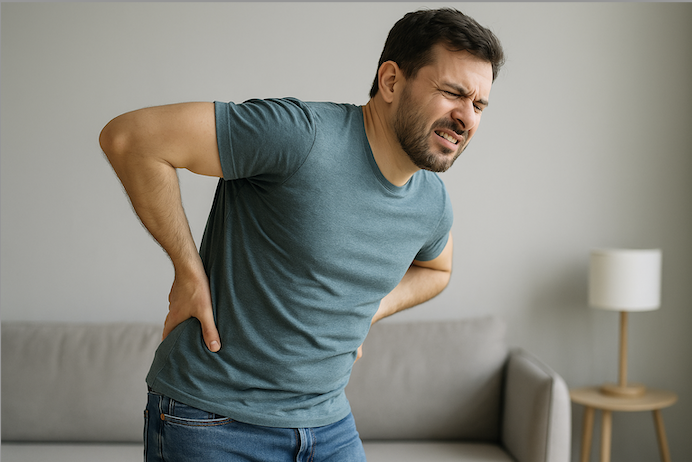Complete Remission of Chronic Low Back Pain Following Photobiomodulation Therapy: A Case Report
Patient Information:
Age/Sex: 54-year-old male
Chief Complaint: Chronic low back pain persisting for over one month post motor vehicle accident
Pain Duration: 6 weeks
Pain Area: Lumbar region and paravertebral musculature
Baseline Pain Score: 7/10 on the Numeric Pain Rating Scale (NPRS)
Clinical Background:
The patient presented with persistent low back pain and reduced lumbar flexibility following a car accident. He reported difficulty performing daily tasks, sleep disturbances due to pain, and decreased physical activity. No fractures or surgical history were reported. MRI showed no structural damage, but muscle spasm and inflammation were noted.
Intervention:
Device: Avant Wellness LZ30 Pro Z
Red Laser:
Wavelength: 637 nm
Power: 1000 mW (2 x 500 mW)
Mode: Pulsed at 100 Hz
Time: 3 minutes
Energy Delivered (Dose): 180J
Power(W)×Time(s)=1.0W×180s=180J
Infrared Laser:
Wavelength: 808 nm
Power: 1400 mW (2 x 700 mW)
Mode: Pulsed at 100 Hz
Time: 3 minutes
Energy Delivered (Dose): 252J
Power(W)×Time(s)=1.4W×180s=252J
Total Dose per Session: 432 Joules
Frequency: Twice per week for 3 weeks
Total Sessions: 6
Total Cumulative Dose: 432 J × 6 = 2,592 Joules
Application Site: Lumbar spine and bilateral paravertebral muscles
Outcome Measures:
Pain: Assessed using the Oswestry Disability Index (ODI) and NPRS
ODI improved from 44% (moderate disability) to 0% (no disability)
NPRS improved from 7/10 to 0/10
Flexibility: Improved as measured by increased trunk flexion range of motion (clinical goniometry)
Patient Global Impression of Change (PGIC): “Very much improved”
No adverse events were reported
Discussion:
This case highlights the successful use of PBM for the treatment of chronic low back pain using the Avant LZ30 Pro Z laser. The pulsed red and infrared wavelengths provided a total of 432 J per session, targeting the inflamed and spasmodic lumbar and paraspinal muscles. The combination of biostimulation, improved circulation, and reduction of inflammation likely contributed to rapid resolution of symptoms. This case supports the integration of PBM as a non-invasive, safe, and effective option for chronic musculoskeletal pain.
Conclusion:
After six sessions of PBM therapy over 3 weeks, the patient experienced complete remission of chronic low back pain, restored flexibility, and normalization of functional status. The treatment was well-tolerated and effective.
